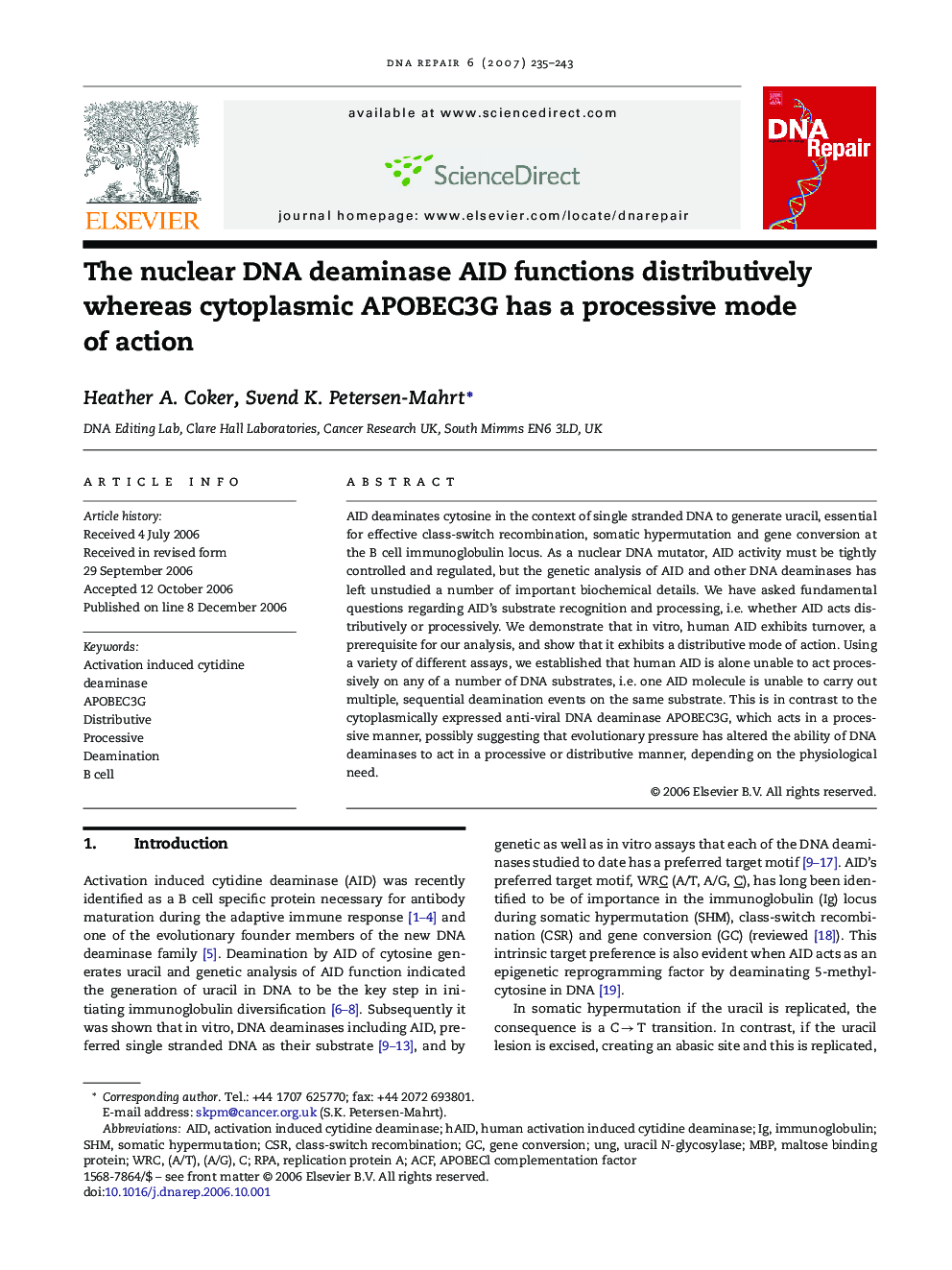| کد مقاله | کد نشریه | سال انتشار | مقاله انگلیسی | نسخه تمام متن |
|---|---|---|---|---|
| 1981465 | 1061936 | 2007 | 9 صفحه PDF | دانلود رایگان |
عنوان انگلیسی مقاله ISI
The nuclear DNA deaminase AID functions distributively whereas cytoplasmic APOBEC3G has a processive mode of action
دانلود مقاله + سفارش ترجمه
دانلود مقاله ISI انگلیسی
رایگان برای ایرانیان
کلمات کلیدی
APOBEC3GUngDeaminationactivation induced cytidine deaminaseRPASHMWRCACFMBPCSRsomatic hypermutation - ابرمتن سوتیimmunoglobulin - ایمونوگلوبولینgene conversion - تبدیل ژنreplication protein A - تلقیح پروتئین ADistributive - توزیعیB cell - لنفوسیت بیclass-switch recombination - نوکلئوتید کلاس سوئیچmaltose binding protein - پروتئین متصل به مالتوزAID - کمک
موضوعات مرتبط
علوم زیستی و بیوفناوری
بیوشیمی، ژنتیک و زیست شناسی مولکولی
زیست شیمی
پیش نمایش صفحه اول مقاله

چکیده انگلیسی
AID deaminates cytosine in the context of single stranded DNA to generate uracil, essential for effective class-switch recombination, somatic hypermutation and gene conversion at the B cell immunoglobulin locus. As a nuclear DNA mutator, AID activity must be tightly controlled and regulated, but the genetic analysis of AID and other DNA deaminases has left unstudied a number of important biochemical details. We have asked fundamental questions regarding AID's substrate recognition and processing, i.e. whether AID acts distributively or processively. We demonstrate that in vitro, human AID exhibits turnover, a prerequisite for our analysis, and show that it exhibits a distributive mode of action. Using a variety of different assays, we established that human AID is alone unable to act processively on any of a number of DNA substrates, i.e. one AID molecule is unable to carry out multiple, sequential deamination events on the same substrate. This is in contrast to the cytoplasmically expressed anti-viral DNA deaminase APOBEC3G, which acts in a processive manner, possibly suggesting that evolutionary pressure has altered the ability of DNA deaminases to act in a processive or distributive manner, depending on the physiological need.
ناشر
Database: Elsevier - ScienceDirect (ساینس دایرکت)
Journal: DNA Repair - Volume 6, Issue 2, 4 February 2007, Pages 235-243
Journal: DNA Repair - Volume 6, Issue 2, 4 February 2007, Pages 235-243
نویسندگان
Heather A. Coker, Svend K. Petersen-Mahrt,